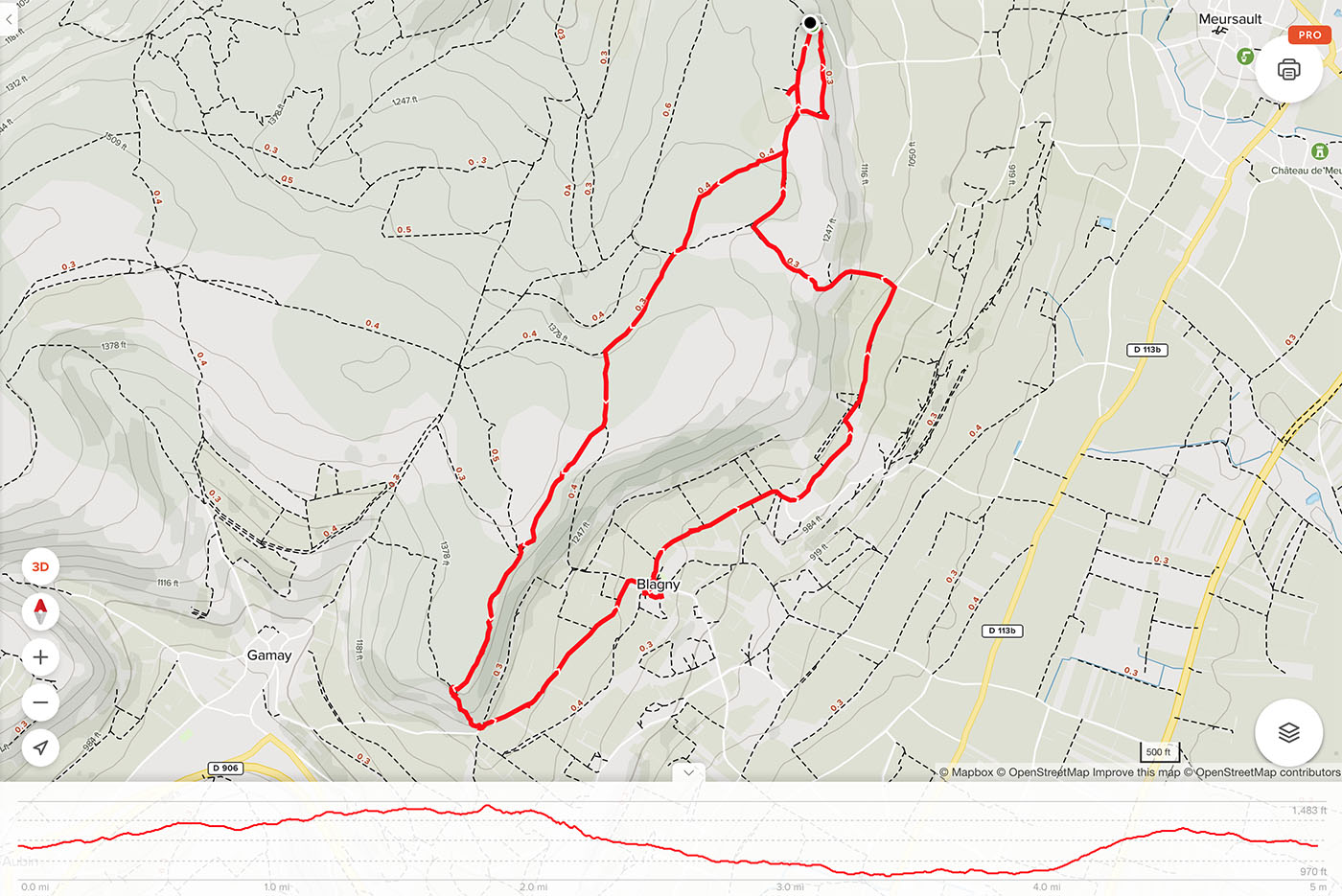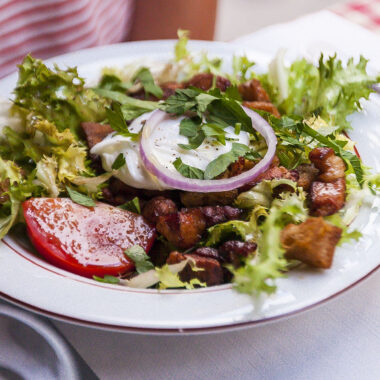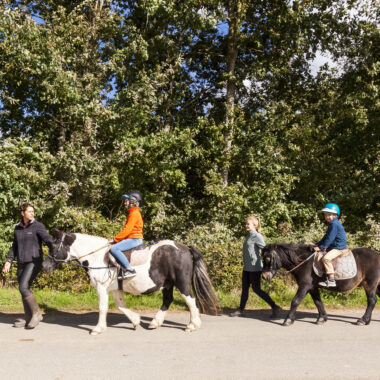A trip to Burgundy has always been on my bucket list, and while our timing wasn’t perfect – it was a later vintage than usual so all of the small producers were busy harvesting – it was still an enlightening, beautiful and tasty experience. Burgundy is home to some of the most prestigious producers in all of France but accounts for only 3% of total French wine production. The region exports 48% of its wine. Burgundy runs 120kilometers/75 miles from north (Dijon) to south (Macon) not including the Chablis region, which is between Beaune and Paris. There are approximately 29,396 planted hectares/72,608 planted acres with the majority being Chardonnay (61%) followed by Pinot Noir (30%), Crémant de Bourgogne (8%) for sparkling, and rosé varietals (1%). The region has an astounding 4,000 winegrowers so, as one can imagine, some of the producers are quite small.
One of the things I really wanted to dig into was Burgundy’s complicated appellation system, which has 100 different Appellations d’Origine Controlée (AOC) wines:
- 52% of production (23 appellations) is Regional Burgundy wine, which means the wine can come from a number of different plots throughout the Burgundy area carrying Regional classification
- 35% of wine (44 appellations) is classified as Village which means the grapes must be grown in and around the village named on the bottle (such as Nuits Saint Georges, Meursault, Mercurey)
- 12% is Premier Cru wine which means the grapes will be grown in one single vineyard within the named village; both the village and vineyard name appear on the bottle (such as Vosne Romanée (village) 1er (Premier) Cru Les Suchots (vineyard name))
- 2% (33 appellations) is Grand Cru wine where just the vineyard name appears on the bottle (most of which are Pinot Noir)
There were very detailed maps in each winery breaking down the parcel perimeters by the above status, including the specific vineyard names. I think you’d have to live and work in the region to really comprehend all the various terroirs in each specific site. My takeaway: limestone and clay soils is where it’s at!
We decided to stay in Chalon-sur-Saône so we could utilize both train and rental car to explore the area. Chalon had some very cute walking streets with a variety of shops and squares where we sat and sampled local wines. We enjoyed some very creative tapas with a glass of Mercurey and Givry on our first evening while Max made friends with some local kids and played soccer on the cobblestone streets. Lilia and I also ventured into a wine shop where the gentleman spoke excellent English and explained many of the wines from the surrounding regions. We walked out with a bottle of Aligoté and Pinot Noir from Mercurey to try.
We took the train to Beaune on day one to check out the town, taste some wine and explore the largest wine cave in Burgundy. Max and I also had a little lunch date as he was determined to try escargot. I was expecting to have to finish the plate, but turned out he really enjoyed them and I only got one! The sauce of butter, garlic and parsley coupled with the earthy taste of the actual snail was quite yummy. The matron of the restaurant showed us how to pour the escargot sauce on our French bread, which was also delicious.
Patriarche began as a convent of the Visitandines and was purchased by Jean-Baptiste Patriarche on August 23, 1796 with the intent of cellaring his growing winery based in the outskirts of Beaune. Amazing to meander through some of the five kilometers of caves under the streets of Beaune. We tasted three of Patriarche’s Chardonnays and three Pinot Noirs before surfacing back up into the broad daylight. We all agreed that we wouldn’t be too keen to work in the small, dark, humid areas underneath the town, but what perfect conditions in which to age wine. I also enjoyed tasting at a very nice wine shop called Aegerter Grands Vins de Bourgogne (Sam took the kids back to Chalon for me as they’d had enough of tagging along with Mom!). Another very gracious and knowledgeable gentleman who spent just over an hour tasting me through wines made by Jean-Luc and Paul Aegerter as well as a few others in the region. He even threw in a Malbec from Vosne Romanée made in the Burgundian style. He was very patient explaining the AOC rules to me and we discussed how 30-40% of Burgundy is now being farmed organically, a shift that many vineyards throughout the globe are making.
On day two we were off in our teeny-tiny rental car to visit the villages of Meursault and Pommard. We started the day with the Meursault-Blagny vineyard walk, a 7.3 kilometer/4.5 mile hike that initially routed us through the forest on top of the limestone shelf that runs along the western side of Burgundy. At the turnaround point we meandered down the cliffs and then back through many of the recently harvested vineyards (thanks Kristina for the link to all of the walks!). It was so great to get close to the vines and soil to really check out their nuances and compare them to vineyards I’d worked with. The parcels that were just so full of limestone were a site to behold! The kids enjoyed running up and down the vine rows looking for any remaining clusters to sample, it became a good lesson for them on the difference between second crop versus primary clusters.

We also ventured into the village of Meursault to enjoy a glass of Blanc de Blanc Crémant and a local rosé. The day finished up in Pommard exploring the quaint town, where we stumbled upon a group sorting some Pinot Noir at Domaine De Courcel. It was nice to taste some berries, although unfortunately the area had been hit with some mildew so they had a lot of work to do. I heard from the various producers that between mildew issues and the horrific frost they’d had in March, they were only harvesting about 60% of their typical crop. I enjoyed a quick tasting with a newer producer – Armand Heitz – who was not only making some delicious wines, but growing vegetables to sell and raising beef as well. I really enjoyed their Chassagne-Montrachet Premier Cru Morgeot, delicious! My final tasting of the day was at Château de Pommard, where their seven main Pinot Noir parcels were located within the stone walls behind the Château, the earliest planted in 1962. The internal vineyards stopped spraying in 2008, became certified organic a few years back and will be certified biodynamic next year.
Yesterday we were greeted with a deluge, which made adventuring a little more difficult. We did manage to sneak in a quick trip to Givry, where we were pleasantly surprised by the locals playing live music to honor an Argentinian artist who painted a mural of the town. Some local ladies were very welcoming and invited us to enjoy the concert, taste local wine and sample some Burgundian savory pastries. During the afternoon I braved the storm for my first time driving in Europe and headed back to Château de Meursault for a winery tour and tasting. Again, a very informative and well-spoken (in English) host. I learned the Château had recently been purchased by a new owner who is investing heavily in the property. I really enjoyed the way in which we tasted the Pinot Noirs before the Chardonnays as the Pinots were more elegant and delicate. The 2016 Volnay Clos Des Chênes Premier Cru was my favorite of the Pinots, more density in the tannins (I think I’m still used to all those mountain Cabernet tannins). For the whites, the 2018 Meursault Perrières Premier Cru was by far my favorite, very elegant and integrated. I could definitely detect some Francois Frères barrels in the first Chardonnay!
With 4,000 producers in Burgundy and so many different villages, I was feeling very overwhelmed with the choice of where to visit, what to see, and what to taste. But these past three days certainly answered so many of my questions and gave me a broader understanding of the region. There were just so many excellent wines to try. Next time I visit, I’ll be sure not to do so in the middle of their harvest!





































































































































Pingback: Tours and the Loire – Our Walkabout Two
Pingback: Arcachon and Bordeaux – Our Walkabout Two
It seems incredible that so much of the countryside is devoted to growing grapes for wine. Not a vegetable or grain crop in sight? Who drinks all of that wine? Washington (east of the Cascades) has lots of wineries now also – climate change is apparently making Washington a better location for grape growing. I guess California is getting too hot and too dry?
Well, Bourgogne/Burgundy is a relatively thin strip of land that stretches north/south along a limestone shelf. Yes, almost the entire landscape is covered with wine grapes, but that’s because it’s so ideal for growing them there. In somewhere like the Loire Valley, which is much larger, it was actually tricky to find the wine grapes amongst all the other crop cultivation.